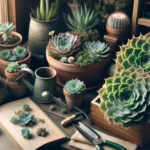Meet Sempervivum Globiferum: An Introduction
Welcome to the hearty world of Sempervivum Globiferum, a succulent that’s as fun to say as it is to grow! Often affectionately nicknamed ‘Rollers’ due to its offshoots that scatter around like little tumbleweeds, this plant is the definition of nature’s adaptability and resilience. Originating from the high altitudes of Europe, these plucky little plants make a home out of rocky crags and weathered landscapes, standing as a testament to life’s persistence.
What makes Sempervivum Globiferum stand out in the vast family of succulents? Imagine a rosette of fleshy leaves, each one tipped with a fine point as if it’s reaching up to the sun. Now, multiply that into a clutter of rosettes, all snugly fit together to form a lush, verdant mound — this is the charming display that has won the hearts of gardeners worldwide.
Anyone who’s ventured into the world of succulents knows these are not just plants; they’re a hobby, a passion, and sometimes, an obsession. Take, for example, a seasoned hiker scaling the rugged Alps, only to stumble upon a community of Sempervivum Globiferum nestling in a nook, unbothered by the extremes of weather. It’s no wonder these stoic little plants have journeyed from their wild abodes into our homes and gardens, bringing a piece of that untamed spirit with them.
Have you ever marveled at how these plants manage to survive where others would simply perish? They store water in their thick leaves, of course! But it’s more than just a survival tactic; it’s a way of life that teaches us about making the most of our resources and thriving against the odds. If you’re looking to discover more on succulent care, remember that it’s not merely about sustaining but about learning resilience from these wonders of nature.
And now, for the pièce de résistance, behold the visual delight of our beloved Sempervivum Globiferum thriving in its natural element:
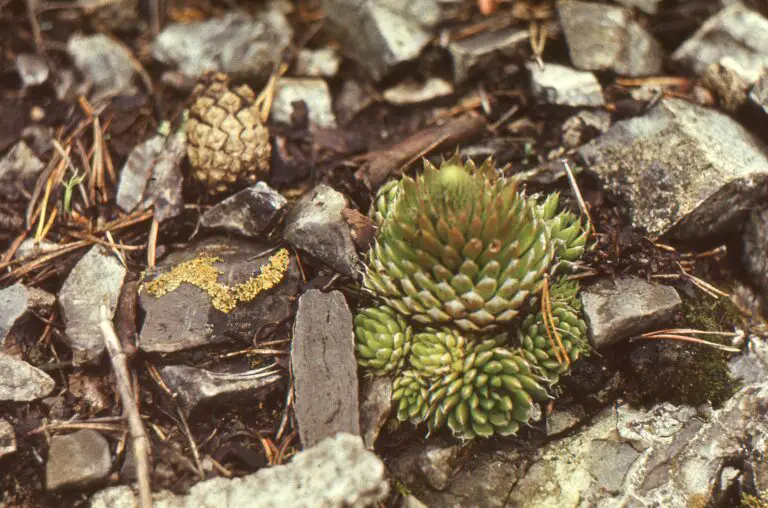
As you gaze upon this image, you can’t help but admire the artistry of each leaf, the symmetry of the rosettes, and the sheer willpower etched into its very essence. This, dear reader, is the captivating world of Sempervivum Globiferum, a place where the marvels of the natural world unfold in the palm of your hand.
A Splendid Addition to Your Garden: Why Choose Sempervivum Globiferum
Seeking a plant that not only enhances the charm of your garden but also withstands the fickleness of nature? Look no further than Sempervivum globiferum, the hardy and attractive rosette that’s as resilient as it is eye-catching. As a garden enthusiast, you’ve likely encountered the quest for plants that offer both beauty and brawn, and this succulent gem is the embodiment of that quest.
What sets Sempervivum globiferum apart from the rest is its astounding hardiness. These plants are survivors, notoriously weathering conditions that would see less sturdy flora wither away. From sub-zero winters to scorching summer heat, Sempervivum globiferum emerges unscathed, making it an ideal year-round companion for gardeners looking to minimize fuss and maximize reliability.
Moreover, their drought resistance is nothing short of remarkable. Once established, these succulent rosettes require minimal watering, thriving on neglect. In fact, many gardeners revel in the fact that Sempervivum globiferum can sail through dry spells with little to no intervention. This makes them not only water-wise choices for eco-conscious gardeners but also perfect for those who may not always remember to water their plants.
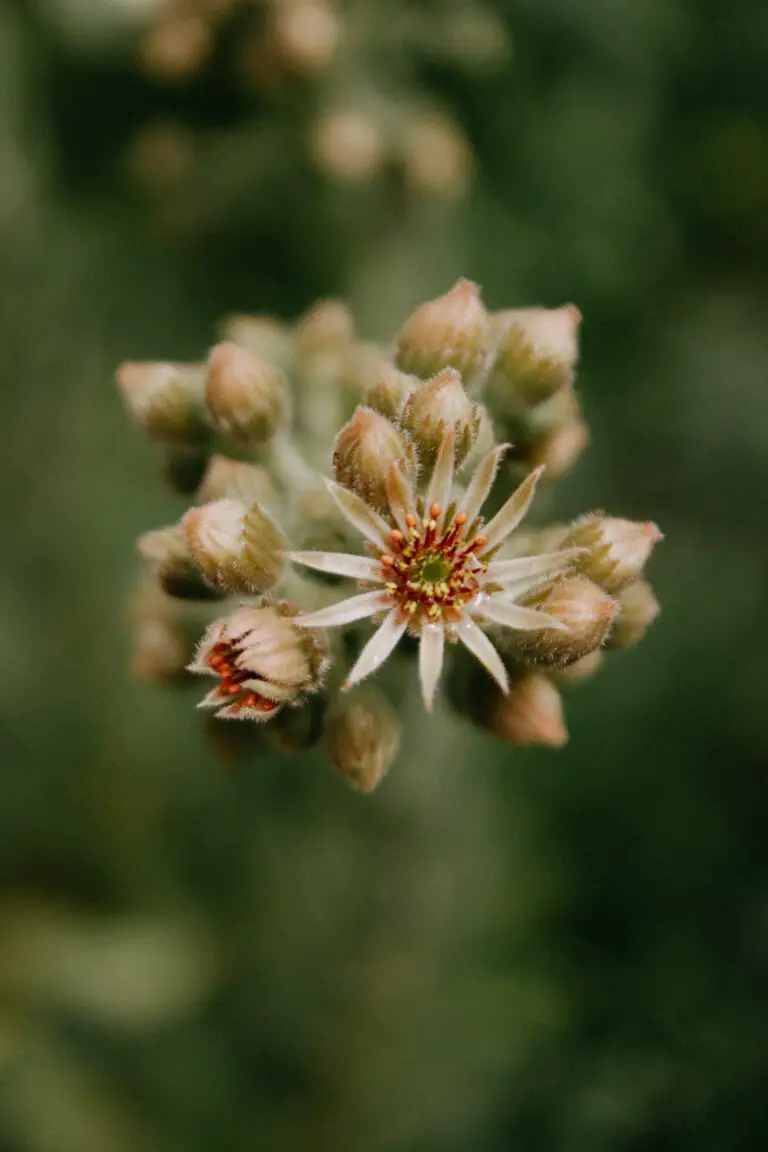
Speaking of aesthetics, Sempervivum globiferum offers a feast for the eyes with its symmetrical rosettes and diverse color palette, ranging from deep greens to rich, burgundy tips. These are plants that lend a textural contrast to your garden, offering a visual spectacle as they multiply and form clusters of lush, geometric beauty.
And for those who ponder over care, fear not. Caring for Sempervivum globiferum is straightforward, making it a splendid choice for both gardening novices and seasoned green thumbs alike. If you’re eager to learn more about nurturing these resilient rosettes, consider exploring excellent resources on succulent care to ensure your Sempervivum thrive.
Next time you gaze upon your burgeoning garden and wonder what more you could possibly add for that extra dash of vigor and charm, remember the unassuming yet magnificent Sempervivum globiferum. It’s not just a plant; it’s a statement of endurance, a testament to the adage that true beauty lies in resilience.
Anatomy of Survival: Unpacking the Resilience of ‘Hens and Chicks’
Imagine a plant so tenacious that it seems to laugh in the face of arid deserts, freezing temperatures, and nutrient-starved soils. The Sempervivum Globiferum, affectionately known as the ‘Hens and Chicks’, possesses such audacity. This evergreen perennial’s adaptability is not down to luck; it’s a masterclass in survivalist anatomy.
To begin with, the fleshy leaves of these rosette-forming succulents are a veritable fortress. Packed with water-storing capabilities, they ensure the plant remains hydrated even when rainfall plays hard to get. But it’s not just about storage; the leaves’ waxy cuticle reflects sunlight away, keeping the plant cool while urging thirsty herbivores to look elsewhere for a snack.
The root system, compact yet efficient, is Sempervivum Globiferum’s secret weapon for thriving in shallow, gritty soils. These fibrous roots anchor the plant firmly, soaking up every droplet of moisture like a sponge, even from seemingly inhospitable crevices where other plants wouldn’t dare to dwell. Generous care tips online extol the virtues of these remarkable roots and their minimal demands.
Climate vagaries? No problem. Sempervivum Globiferum shrugs off subzero chills and sweltering heat with equal aplomb. Its secret? An antifreeze-like sap prevents ice crystal formation in its cells, a veritable botanical superpower. And in the heat, when others wither, its leaves close slightly, conserving every precious drop of moisture.
If reproduction is the measure of success, then Sempervivum Globiferum is winning at life. Beyond the parent ‘hen’, it produces countless ‘chicks’, ensuring its lineage continues across the rocky landscapes. These little clones can roll far from the mother plant, colonizing new territories like green pioneers in a vast frontier.
The visual tale of resilience isn’t complete without witnessing the plucky plant in action. Hence, we’ve included a video that showcases , where you can marvel at their rugged charm.
To witness more plant tenacity in action, take a peek at this sage advice on how a plant’s resilience becomes an artist’s brush, painting strokes of vibrancy even in the leanest times. Sempervivum Globiferum’s tale is one of unwavering endurance—a true testament to nature’s ingenuity in the most challenging of environments.
Cultivating Your Clusters: Optimal Conditions for Thriving Plants
Let’s talk about setting up the perfect home for your Sempervivum Globiferum, those resilient little rosettes that steal the show. Trust me, these plants are tougher than they look, but with just the right conditions, they’ll reward you with a gorgeous, ever-expanding cluster of botanical bliss!
First things first, let’s dive into the soil situation. These succulents crave a well-draining mix—think coarse sand, perlite, and a smidgeon of compost combined into what I like to call the ‘triple-threat mix.’ It’s the groundwork that ensures your globiferums don’t sit in wet shoes—it’s practically like dancing in puddles, and nobody likes that!
Now, on to the hydration hubbub. Watering these succulents is less about sticking to a strict schedule and more about reading the room—or in this case, the soil. Give them a drink when the soil feels dry to the touch, but don’t overdo it. Too much water love and you’ll find yourself hosting a farewell party for your rosettes. Sempervivum Globiferum wants to play it cool, just like that one friend who knows exactly when to leave the party.
Let’s gush about sun exposure. These plants are sun-seekers, basking in at least 6 hours of direct sunlight a day. Picture them sunbathing on a beach—they’ve got their shades on and are soaking in those rays. However, if you live in a particularly hot neighborhood, a little afternoon shade won’t hurt. Think of it as offering them a canopy to prevent a sunburn.
You might also be contemplating growing succulents indoors, and the good news is Sempervivum Globiferum can adapt to that lifestyle too! Just be sure to place them near a bright window where they can get their daily dose of sun, like a cat sprawled on the windowsill.
Curious to see these tips in action? Check out this engaging video, which beautifully guides you through the essentials of caring for your robust rosettes:
Last but not least, a bit of encouragement goes a long way. Whisper sweet nothings to your Sempervivum Globiferum, and watch them flourish with the kind of zest only whispered words of growth can give. Remember, the best gardens are grown with love and just the right know-how. With your newfound knowledge, you’re well on your way to cultivating nature’s most resilient rosettes!
Dazzling Varieties: Exploring the Types of Sempervivum Globiferum
Step right into the fascinating world of Sempervivum Globiferum, and prepare to be wowed by the sheer diversity this resilient plant offers! Known also as ‘hens and chicks,’ these rosette-forming beauties are not your average succulents. With a color palette that ranges from vibrant greens to deep purples, and even hints of red, they playfully paint the rocky landscapes they so often call home.
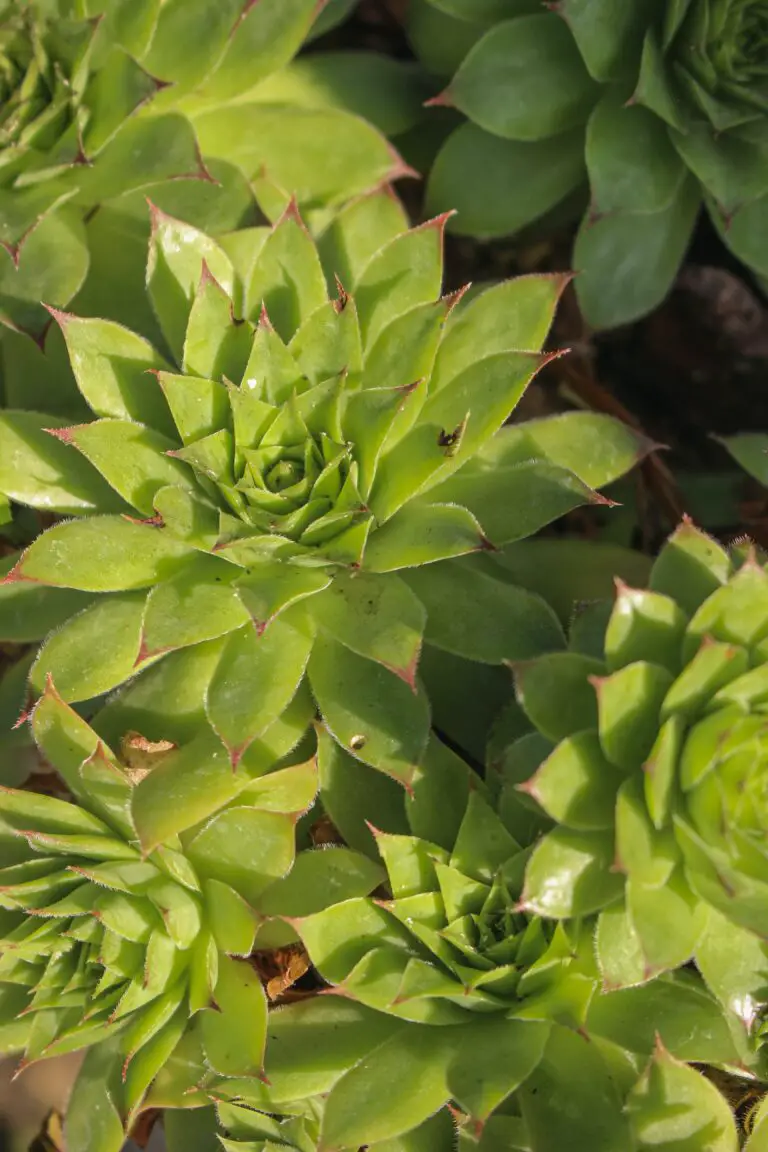
Imagine cushiony clusters tightly packed together like a crowd at a concert, each uniquely hued rosette swaying in its own rhythm to the tune of nature’s breath. The visual spectacle only intensifies as these plants mature and develop deeper tones, transitioning through life phases with extraordinary elegance.
Meet the Colorful Cast
Let’s take a leisurely stroll through the Sempervivum Globiferum gallery. First up, the ‘Green Wheel’—an emerald marvel that commands attention with its symmetrical allure. Next in line, the ‘Red Rubin’, flaunting leaves tipped with a blushing crimson as if delicately dipped in wine. If sunlight is the stage light, then the ‘Purple Beauty’ is the star of the show, casting a deep violet glow upon its audience.
And the vivid variety doesn’t stop with color! Behold the ‘Globiferum’ with a twist: the bebopping ‘Rollers’ that detach and gambol down to settle in new soil, beginning the circle of life anew. It’s an entrancing dance, an enchantment of form and function by Mother Nature’s choreography.
Harmony in Habitats
Whether perched on a sun-soaked windowsill or nestled in a rock garden masterpiece, Sempervivum Globiferum harmonizes with its environment. But it’s not just about good looks; these plants are survivalists. They scoff at drought and sneer at frost, flaunting their tenacity as they thrive in conditions that would see other flora falter.
For fans of drought-tolerant landscaping, these succulents come with an irresistible proposition: an aesthetic delight with minimal upkeep. A single specimen can ignite a passion, setting you off on a horticultural escapade as enthralling as the plants themselves.
Indeed, cultivating Sempervivum Globiferum is more than gardening; it’s an encounter with nature’s resilient rosettes, a vivid story of survival and beauty intertwined. As they multiply and vary, these succulents inspire with their ability to adapt, their unspoken stories of endurance, and their captivating visual appeal. Witnessing such splendor, one can only revel in the wonders that nature so generously provides.
The Art of Propagation: Growing New Plants from ‘Chicks’
If you’ve been charmed by the spiky allure of Sempervivum globiferum, you’re not alone. These hardy rosettes are not only tough and beautiful but are also masters of multiplication. If you’re looking to grow your sempervivum family, the key lies in the art of propagation—a simple yet rewarding process that allows these succulents to flourish abundantly. Let’s dig into the process that transforms single plants into thriving clusters.
Propagation of Sempervivum globiferum can be likened to creating a botanical chain reaction. Each mature rosette, or ‘hen’, produces numerous offsets, colloquially known as ‘chicks’. These chicks are the secret to expanding your sempervivum collection and can be easily coaxed into establishing their own roots.
The first step in this green endeavor is to gently separate a chick from the mother plant. Be mindful to keep a good portion of the roots intact as this will ensure a smoother transition to independent growth. It’s akin to taking the training wheels off a bicycle; the plant will wobble at first but quickly finds its balance in the soil.
Once you have the offset, it’s time to select the perfect spot. Sempervivum globiferum is unpretentious about its dwelling, thriving in shallow, well-drained, gravelly beds. Planting the chick is straightforward—nestle it snugly into the soil, ensuring that the roots make good contact. It’s a moment akin to tucking in a seedling for its first night in a new bed, full of potential and promise.

Watering should be done with a ‘less is more’ approach; remember, this alpine succulent has evolved to survive in Spartan conditions. Overwatering can lead to root rot, the antithesis of growth. Instead, water sparingly, just enough to moisten the soil without drowning the roots. Imagine dew upon a spider’s web, a gentle hydration to start the day.
Real-life examples abound of Sempervivum globiferum enthusiasts who’ve witnessed the magic of propagation. Take, for instance, a gardener in the cool climes of the Pacific Northwest; with minimal intervention, their chicks rooted rapidly, and by season’s end, they had a brood that was the envy of the local gardening club. Success stories like these are not just possible; they’re probable. With a touch of patience and a bit of care, sempervivum propagation is a journey filled with lush rosettes at every turn.
By incorporating these tips into your gardening routine, you’ll be well on your way to growing a battalion of sempervivum beauties. Embrace the role of nature’s apprentice, and watch as the chicks flourish under your green thumb, transforming empty spaces into succulent sanctuaries. There’s something truly profound in ushering a lone offset into a full-fledged, photosynthesizing, carbon-sequestering, water-wise marvel.
Pests, Problems, and Prevention: Keeping Your Sempervivum Globiferum Healthy
Imagine a troop of tiny invaders marching towards your prized Sempervivum Globiferum, determined to make a feast of its succulent leaves. That’s right – even these resilient rosettes can fall victim to the occasional pest. But fear not! You can protect your plant with some knowledge and vigilant care.
First things first: aphids. These pesky insects can be a common sight on the sap-rich leaves of your Sempervivum Globiferum. If you notice misshapen or curled leaves, there’s a good chance these critters are to blame. A natural remedy? Introduce ladybugs to your garden, as they’re natural predators of aphids. Plus, they make your garden ever more lively!
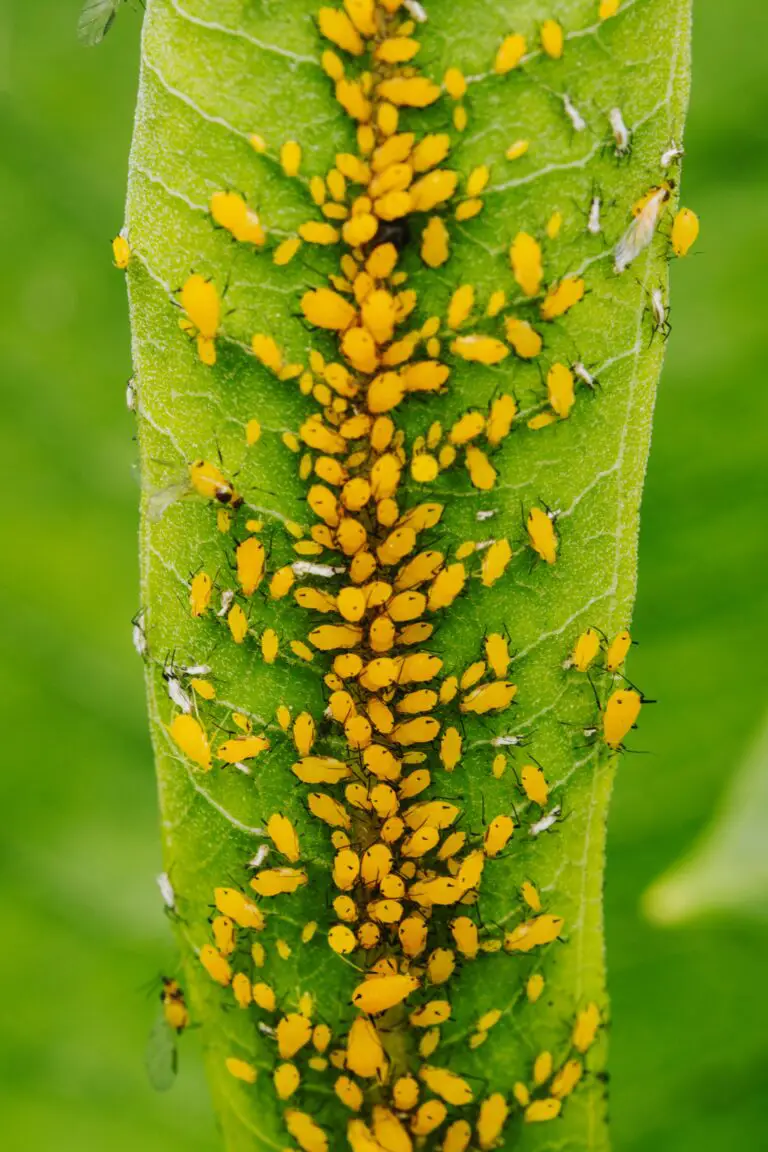
Next on the list: mealybugs and scale insects. If you find sticky residue on your plant or notice its growth has stalled, you may be dealing with one of these silent destroyers. Wipe them off with an alcohol-soaked cotton swab or, for a larger infestation, consider using neem oil – a natural insecticide that can help keep your Sempervivum safe.
Snails and Slugs: The Slimy Saboteurs
On any dewy morning, you might spot snails or slugs making a slow but steady beeline for your Sempervivum Globiferum. Left unattended, they can munch through leaves at an alarming rate. Combat these garden gastropods by setting up barriers – think crushed eggshells or diatomaceous earth. These methods not only deter them but also add an extra element of texture to your garden’s aesthetic.
Root Rot: The Undercover Enemy
While not technically a pest, root rot can strike quietly, often amidst your plants’ underground domain. Overwatering is the usual culprit, leaving your Sempervivum vulnerable to this fungal foe. So, how do you fight a threat you cannot see? The answer is prevention through proper watering techniques. Ensure good drainage and allow the soil to dry between watering sessions, making it less hospitable to root rot.
Incorporating these tips into your gardening routine will help keep your Sempervivum Globiferum looking its finest. Remember, a watchful eye and early intervention are your best tools in ensuring these resilient rosettes overcome any pesky problems.
Garden to Table: The Surprising Edibility and Uses of Sempervivum
When you gaze upon the hardy rosettes of the Sempervivum globiferum, or the jovial ‘Hens and Chicks’ as they’re affectionately known, you might not immediately think of a kitchen staple. Yet, here we are, about to delve into the scrumptious world where your garden becomes your personal pantry. Historical records and anecdotal tales whisper of this resilient succulent’s secret life as not just a visual delight, but a source of nutrition and wellness.
Imagine a time, not so long ago, when traditional herbal medicine was the cornerstone of daily health care. In such a time, the Sempervivum globiferum was a treasure cherished for its purported medicinal properties, soothing everything from skin irritations to digestive woes. But did you know they can also be nibbled on? That’s right, those fleshy leaves, when young and tender, can be added to salads or brewed into a tea, introducing a subtly sour tang and an influx of antioxidants to your meal.
Let’s take a closer look at this edible enigma. Not only is incorporating Sempervivum globiferum a bold culinary experiment, but it’s also a nod to sustainable living. Picture yourself stepping outside, plucking a few fresh leaves, and reducing your carbon footprint with every bite. More than just a quirky garnish, these succulents carry a bounty of potential health benefits, including vitamin C and fiber—essential components for a thriving body.
The versatility doesn’t stop at the dinner plate. Local foragers and modern mixologists have played with their unique flavor profile, crafting cocktails and mocktails with a rosette garnish that’s sure to start conversations. And yes—these conversations often lead to an enlightened awareness of nature’s edible array, tucked away in the unlikeliest of leafy nooks.
Here’s where visual learners might appreciate a more intimate look at the process of transforming the resilient Sempervivum into an edible wonder:
As you’ve seen, there’s more to these plucky plants than meets the eye. Remember, when considering making a meal out of your ‘Hens and Chicks’, ensure they haven’t been treated with pesticides or other chemicals. Responsible foraging and cultivation practices are key to ensuring your garden-to-table experience is as safe as it is delightful. So, whether you’re a home chef, a garden enthusiast, or a curious herbalist, it might just be time to give Sempervivum globiferum a spot on your plate and in your pantry.
Garden Design Inspirations Featuring Sempervivum Globiferum
When it comes to creating a striking garden design, Sempervivum globiferum, also known as the hens-and-chicks plant, can transform an ordinary space into a lush tapestry of resilient rosettes. These succulents offer more than just drought tolerance; they bring a touch of alpine magic to any landscape. Let’s dive into the world of garden design with these fascinating plants!
Rock Gardens: A Natural Habitat
Imagine a sloping rock garden, basking in the sun, with Sempervivum globiferum artfully nestled between stones. These plants mimic their natural habitat, thriving in the nooks and crannies of rocks where other plants might struggle. Their ability to store water in their fleshy leaves allows them to withstand the high drainage environment that a rock garden provides. Just think of the visual impact: each rosette echoing the rugged beauty of mountain crevices, with the added benefit of requiring minimal maintenance.
Container Gardens: Versatile and Charming
Not everyone has the luxury of expansive garden beds, but that doesn’t mean Sempervivum globiferum can’t grace your space. Container gardens are a wonderful canvas for these plants. Whether in a rustic clay pot or a modern geometric planter, Sempervivum brings life and texture. The secret to success? Ensure a well-draining soil mix and a pot with drainage holes, mimicking the well-drained slopes these plants adore. Plus, they make excellent companions for other succulents, creating an eclectic and evergreen display on your patio or balcony.
Green Roofs: Eco-Friendly and Aesthetic
Green roofs are increasingly popular, and Sempervivum globiferum is a prime candidate for them. Their hardiness makes them ideal for the challenging conditions found atop buildings. A green roof adorned with these succulents doesn’t just look fantastic; it provides insulation, reduces stormwater runoff, and creates a habitat for wildlife. A roofscape dotted with Sempervivum’s rosettes could become an urban oasis, offering both ecological benefits and a visually stunning garden in the sky.
Incorporating Sempervivum globiferum into various garden designs can be a delightful project, with results that evolve and flourish over time. For some inspirational visuals, have a look at this video showcasing the potential of these incredible succulents in garden design:
As we’ve explored, the versatility of Sempervivum globiferum can lend itself to many garden styles. Whether you are replicating a mountainside with a rock garden, adding charm to your porch with container planting, or transforming your rooftop into a green haven, these rosettes are a testament to nature’s resilience and beauty. Their adaptability to various design aesthetics makes them a go-to for gardeners looking for low-maintenance yet striking plants. So go ahead, let your creativity run wild and let Sempervivum globiferum be the star of your garden tableau.
Frequently Asked Questions
Hey, green-thumb enthusiasts and succulent savants! You’ve stumbled upon the lowdown on one of nature’s toughest and tiniest treasures: Sempervivum Globiferum. Known for its kissable rosettes and rockstar resilience, this little plant packs a surprising punch. But I hear your burning questions – let’s dive into the nitty-gritty of cultivating these evergreen charmers!

What Makes Sempervivum Globiferum Stand Out in the Plant Kingdom?
Oh, where to begin! Picture this: a plump, beady plant minding its own business on rocky crevices and rolling out baby “chicks” as if it’s the plant version of a maternity ward. These ‘Hens and Chicks’ (another name they go by) are nature’s version of “set it and forget it” – plant them once, and they’ll send out pups faster than bunnies in springtime!
Can These Green Beauties Handle Frosty Nights?
Bring on the ice, Elsa, because Sempervivum Globiferum laughs in the face of frost. These succulents are like mini Mount Everest climbers, tolerating chills that would make other plants tap out. So, if you’re living in a spot where Jack Frost is a frequent visitor, these are your go-to garden heroes.
What’s the Ideal Spot for My Sempervivum Globiferum Cluster?
You’ve got an adventurous spirit, and so does your rosette buddy. Pop them in a spot with a smorgasbord of sunlight and they’ll thrive. But here’s a plot twist – they’re also shadow aficionados! Partial shade and they’re still in the game, flexing their versatility like a yoga instructor.
When Should I Water These Parched Plants?
Despite their love for a good tan, Sempervivum Globiferum doesn’t need you to water them like your thirsty lawn. In fact, they prefer a sip over a gulp, making them the ideal mate for forgetful waterers. Just wait for their soil to dry out like a desert, and then quench their thirst – sparingly.
What Soil Gets the Green Thumbs Up?
Think gritty, well-drained, and as airy as a beach volleyball court. These succulents adore soil that won’t hold onto water like a grudge. So, mix in some sand or perlite, and watch your rosettes puff up with pride.
Got Pests? Will They Snack on My Sempervivum Globiferum?
Not to jinx it, but these stoic beauties are not a pest’s first pick. It’s like they’re coated in a “Do Not Eat” sign. But keep an eye out for the occasional interloper, and if you spot trouble, pluck ’em out or treat your plants to a nontoxic spa treatment.
Bonus Tip: Propagating Your Personal Rosette Army
Feeling the itch to spread the Sempervivum Globiferum love? It’s simple! Those little offshoots, affectionately called “chicks”, are ready to leave the nest when they’ve got a few leaves of their own. Gently tug them away from mama hen, give them a new home, and voilà – you’re basically the godparent to a succulent nursery!

